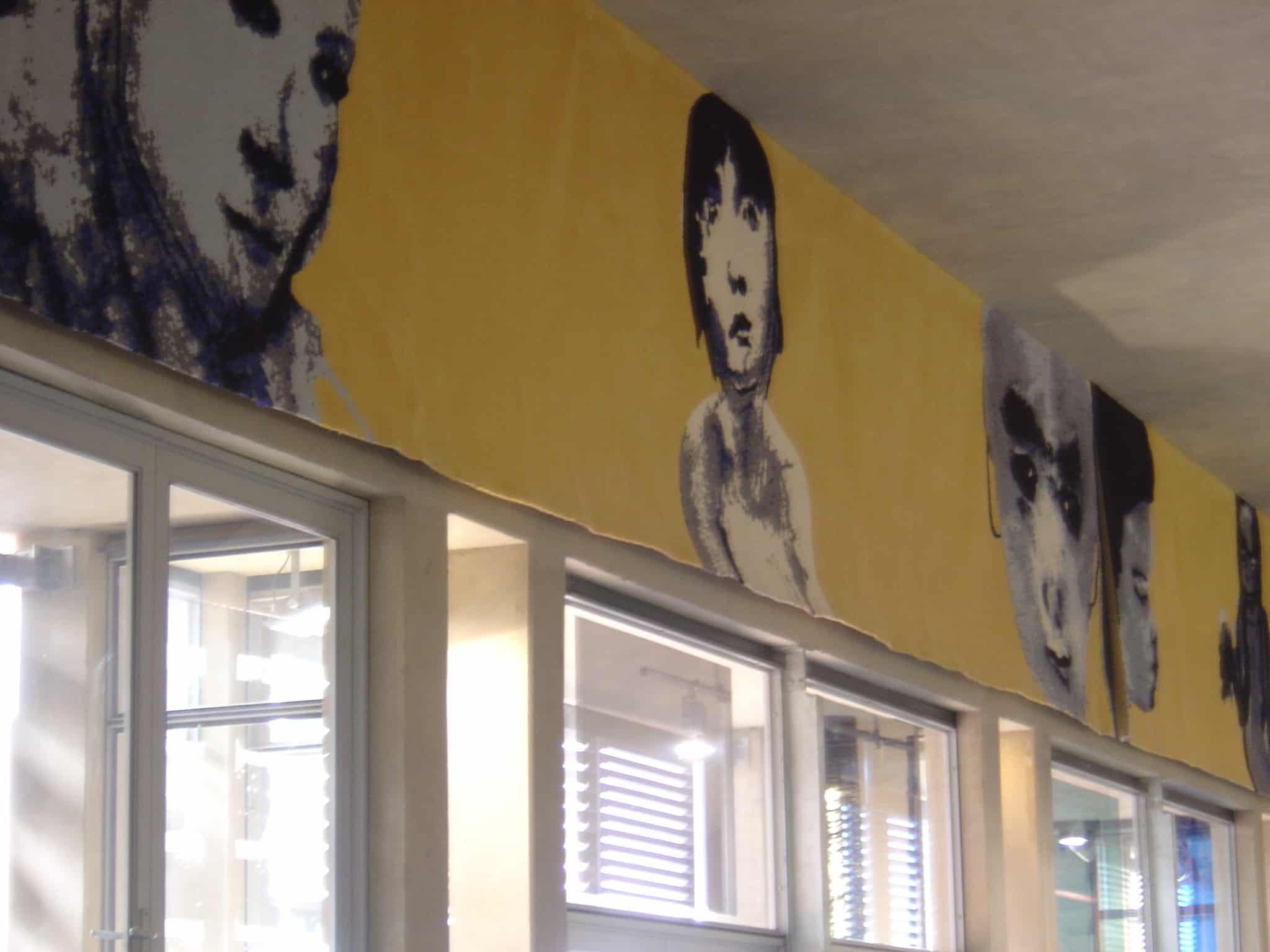The Constitutional Court Trust has been selected as a 2019 Bank of America Art Conservation Project grant recipient that will enable the trust to restore Marlene Dumas’s signature 28-metre art work, The Benefit of the Doubt and re-install it in the Court building by the end of the year
 Marlene Dumas, The Benefit of the Doubt: Triptych, 2000. Fibre. Courtesy of the Constitutional Court Art Collection.
Marlene Dumas, The Benefit of the Doubt: Triptych, 2000. Fibre. Courtesy of the Constitutional Court Art Collection.
The grant funding will enable the Constitutional Court Trust to re-install this enormous fibre triptych, over 28 metres in length and weighing close to 300kg, with a robust, secure, new conservation frame. This signature piece of the Constitutional Court Art Collection will be returned to its permanent home, standing guard over the entrance to the public gallery at the Constitutional Court in Johannesburg.
“The Benefit of the Doubt is one of the most important and most valuable pieces of the Constitutional Court Art Collection (CCAC), not only because it is the work of internationally acclaimed South African born and trained Dutch artist, Marlene Dumas, but also because it embodies the intent of the collection, that is, to pose key questions through artistic expression about the nature of justice. We are pleased to benefit from the Art Conservation Project,’’ said the Constitutional Court Trust, Trust Manager, Catherine Kennedy.
Richard Gush, Chief Executive at Merrill Lynch South Africa, said, “We are delighted to be able to support such an important art work which holds such significance for a critical South African institution. We believe in the power of the arts to help economies thrive, educate and enrich societies, and create greater cultural understanding. That’s why the bank is a leader in helping the arts flourish across the globe, supporting more than 2,000 non-profit cultural institutions each year.”
The restoration of The Benefit of the Doubt by Marlene Dumas is one of 22 Art Conservation Projects announced at this year’s recipient announcement event hosted by Bank of America on October 16 at the Museum of Modern Art in New York City. Recipients in 10 countries and 11 US cities are receiving grant funding through the 2019 Bank of America Art Conservation Project.
The restoration of The Benefit of the Doubt by Marlene Dumas is in select company as a 2019 recipient. The selection of works being recognised as 2019 ACP recipients includes the Starry Night by Vincent van Gogh and The Bather by Paul Cezanne – The Museum of Modern Art, New York; Spring by Georgia O’Keefe – Georgia O’Keeffe Museum, Santa Fe; ten large-scale assemblage paintings by Thornton Dial, Sr. – High Museum of Art, Atlanta; Portrait of Madame Josette Gris by Juan Gris – Museo Nacional Centro De Arte Reina Sofia, Madrid; a diverse selection of works at the Museo de Arte de Puerto Rico; and Scènes des massacres de Scio (The Massacre at Chios) by Eugene Delacroix – Musée Du Louvre, Paris.
The Bank of America Art Conservation Project provides grant funding to non-profit cultural institutions throughout the world to conserve historically or culturally significant works of art that are in danger of deterioration. Since the Art Conservation Project began in 2010, Bank of America has provided grants for more than 170 projects in 33 countries on six continents to conserve paintings, sculptures, and archaeological and architectural pieces that are critically important to cultural heritage and the history of art.
The Art Conservation Project is a key element of Bank of America’s program of arts support worldwide, and part of the company’s environmental, social and governance program. Bank of America believes in the power of the arts to help economies thrive, educate and enrich societies, and create greater cultural understanding. The program includes loans of its private art collection to museums at no cost, sponsorships, and grants to arts organisations for arts education, as well as the preservation of cultural treasures.
For more information, please visit the Art Conservation Project website.



